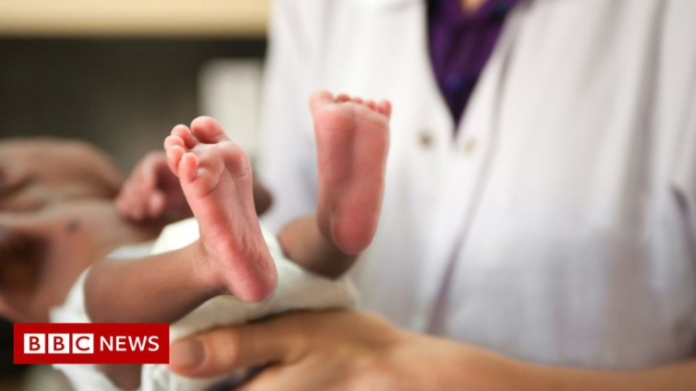Amazing footage has revealed how newborn twins were born while still inside their amniotic sacs.
Less than one in 80,000 infants are born ‘en caul’, which is when the bubble of protective membranes, which enfolds a baby in the womb remains in tact during birth.
The amniotic sac is a jelly like container filled with fluid that helps cushion the baby from bumps and scrapes during pregnancy.
It’s designed to protect the baby during gestation, and normally it breaks when labour begins.
But in one instance, Brazilian doctors had to intervene and break the sacs themselves.
On June 11, Cristiane Mucci gave birth to Maria Cecilia and Maria Alice.
The doctors tenderly prized the sacs open, and then the babies began to break through on their own.
The birth was videoed at the Hospital de Nossa Senhora das Dores in Ponte Nova, a state in country’s south east.
The Daily Mail reports, the hospital said: “On 11th June, two twins came into the world in the maternity ward of the Hospital de Nossa Senhora das Dores.
“Cristiane Mucci gave birth to little ones Maria Cecilia and Maria Alice Mucci.
“However, this birth was different and special: the babies were born en caul, i.e. still inside the amniotic sac that protects the baby during pregnancy.”
The babies were delivered by gynaecologist and obstetrician Dr Emilio Garavini. who was surprised when he realised both babies were en caul.
According to the hospital, the children were born healthy and well.
Caul births are also described as mermaid or veiled births, and are shrouded in superstition.
One belief is that babies are destined for greatness or will be especially lucky in life, as many historical figures have been born en caul.
Another myth is that those born in this way will never drown, due to the amniotic sac – a jelly-like bag of fluid that wraps round a foetus, and is made of two membranes – the amnion and chorion.
Whilst it is thin, it can hold increasing amount of fluid throughout gestation, including the foetus’ urine.
Whilst it is thin, it can hold increasing amount of fluid throughout gestation, including the foetus’ urine.
In an ‘en caul’ birth, the main priority is to break the sac to allow the baby to breathe, since they no longer have oxygen supplied from being inside their mother.
En caul births are more common in C-section deliveries, as babies are pulled out of the womb via surgery as opposed to vaginal delivery.
It also tends to happen more frequently in premature babies, as they are smaller and so less likely to burst the sac during birth.

